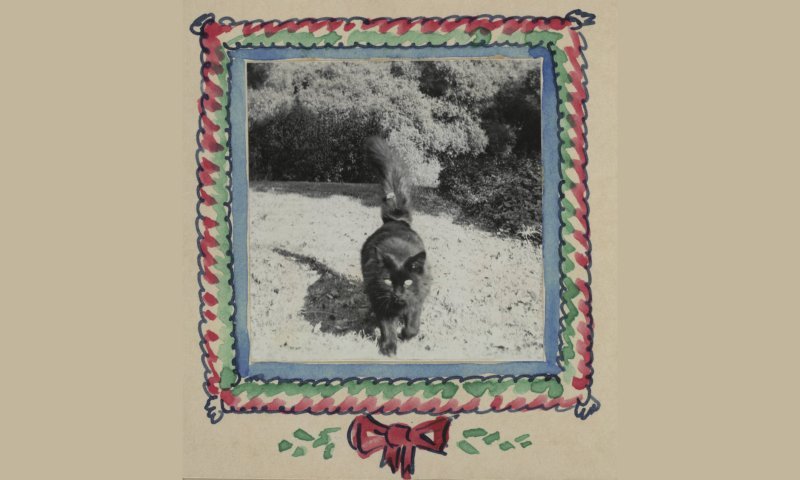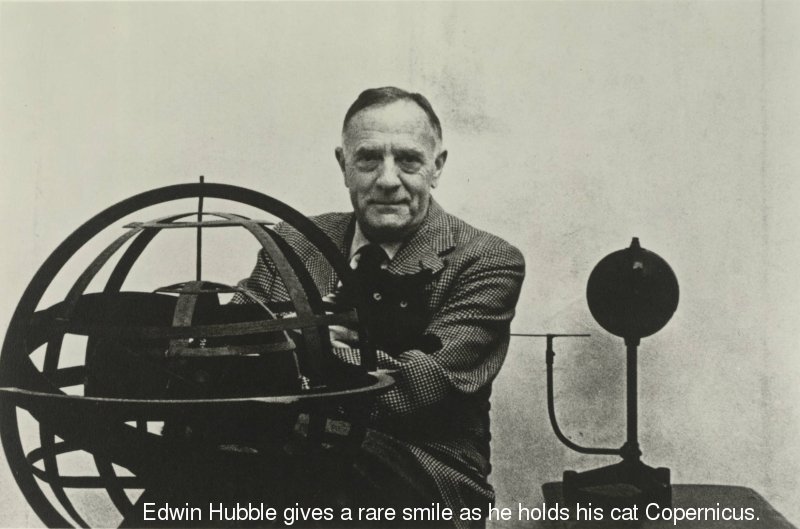Whenever one hears about Hubble, the imagery of deep space and far away planets immediately comes to mind and we remember of one of the greatest science tools ever created by humanity – Hubble Space Telescope. However, many are unaware how this exceptional piece of modern technology received its name. It was named after Edwin Hubble, a famous astronomer.
However, it’s not the scientist we want to talk about. The true focus of our small study is his cat.
In order to tell you this story, we need to travel back in the beginning of 20th century when Edwin Hubble worked at Mount Wilson Observatory. Edwin Hubble’s scientific legacy is still occupying the shelves of Huntington Library in San Marino.
The history can tell you a rich story about the life of Hubble, his goals, studies, and pursuits. His heirloom consists of a multitude of papers and research notes that reside in Huntington. A careful reader will also notice that some evidence could be found about a particularly interesting cat – Copernicus.

Image Credit: Huntington Digital Library
It was 1946 when Edwin Hubble decided to pick up a kitten. He solemnly announced to his wife Grace that this cat should from now on be referred to as Nicolas Copernicus. Interestingly, Grace decided to document the life of Nicolas Copernicus (the cat) in her diary and the writings contain a meticulously detailed biography of Hubble’s cat.
This half-Persian kitten was more than a big addition to Hubble’s life. This cat became his loyal companion and even forced Edwin to make a couple of notable improvements in his household. At first, he added new cat-doors saying that this will cater to cat’s self-respect. When Hubble was sleeping, his cat would stay by his side sleeping calmly besides her beloved master. Many Hubble’s friends often called his household “Nicolas’ estate”.
Often family’s friends would bring treats for the cat. Frequently, the yard before the house was covered with birds, lizards, insects, and other kinds of unlucky prey. Grace once wrote in her diary that Copernicus, just like any other astronomer, was rather kin on having midnight lunches.
Another interesting fact about Nicolas Copernicus the cat was that he was picky when it came to choosing the guests that were allowed to the household. For example, Aldous Huxley, a famous writer, had to retreat after consecutive fierce strikes of Nicolas’ pointy claws.
Even when Edwin Hubble was gone in 1953, Nicolas Copernicus kept waiting for his master to return patiently looking in the windows of his own estate. When the cold body of Edwin Hubble was lying in the bed, one could observe a small half-Persian cat curling right next to him.

Image Credit: Huntington Digital Library
There are some visual references that one can use to describe the relationship between the cat and its master. While Hubble rarely smiled when posing for a photographer, on one of his photos he looks rather happy while holding his beloved pet. This photograph is a true evidence of close relationships between a famous astronomer and his loyal companion that inspired and loved him.
Sometimes, this cat would sit right on top of books laying open in front of his master and Edwin would comment that his cat is helping him researching. Oftentimes, his cat would quietly purr cuddling on his lap. These moving moments were carefully documented by Grace Hubble in her diary.
“When E worked in the study at his big desk, Nicolas solemnly sprawled over as many pages as he could cover. ‘He is helping me,’ E explained. When he sat on E’s lap, he purred differently, a slow, lion-like purr…. ‘Is that your cat purring?’ I would ask, and E would look up from his book, smile, and nod his head.”
